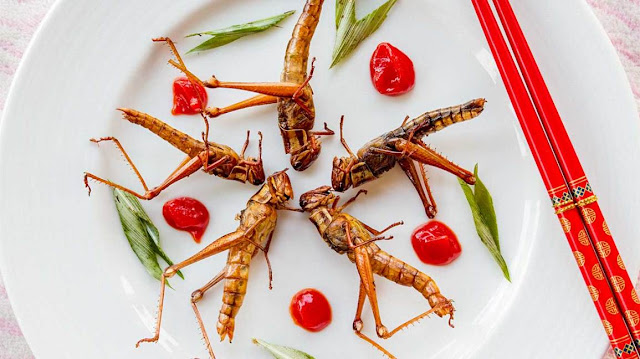Emergence of Covid-19 and the Need for High Protein Diet Creates a New Wave of Interest in Edible Insects
Edible insects have been called the world's perfect food.
Not only are they nutritious but they are tasteless and filling. Edible insects
can be eaten raw or cooked. Eating
insects is often called entomaphagy. Most insects are high in nutrients,
protein, vitamins, and minerals. Often they are cooked before eating to kill
any potentially harmful parasites. Edible insects commonly include, crickets
grasshoppers, aphids, leafhoppers, honey bees, flies, earthworms, and ants.
Insects are mainly raised for consumption in Asia Pacific.
In countries like Thailand and Vietnam, deep-fried rice worms, crickets and
even scorpions are considered a delicacy. The market for edible
insects is witnessing significant changes in developed regions. The
European Food Safety Authority is expected to soon approve the sale of insects,
including ground mealworms, lesser mealworms, locusts, crickets, and
grasshoppers for human consumption. Insects can already be found in U.K.,
Dutch, Belgian, Danish and Finnish supermarkets. Moreover, emergence of Covid-19
has created a new wave of interest in consuming insects.
Insects provide an incredible variety of nutrients that our
bodies need in order to stay healthy. There are several good reasons why insect
bites and meals are better for your health than many other foods. While it is
true that insects can provide some protein to your diet, the majority of these
are protein rich. In addition, insects can provide significant amounts of
dietary fiber, vitamins, minerals, fatty acids and other nutrients that our
diets typically are not equipped to provide.
The three types of edible insects are marine, temperate, and
tropical. The majority of edible insects come from the ocean, lakes, or swamps.
These include crayfish, shrimp, crabs, frogs, millipedes, and locusts. The
majority of temperate insects come from trees, such as almonds, peaches,
mulberries, prunes, pears, plums, and strawberries.
There are two main species of grasshoppers, namely the
western cinereus and the cicadini. Western cinereus is the primary means of
eating grasshoppers in North America. These insects are primarily found in the
Midwest and Southeastern regions. Two subspecies of the grasshopper family are
the golden bride (Cissampelos pareira), which is the smallest of the two
species; and the stink bug (Cissampelos uvularius). These insects are commonly
found in fields, roads, feed stores, parks, cabins, along the trails and wooded
areas, in abandoned mines, along highways, and along railroad tracks.



Comments
Post a Comment